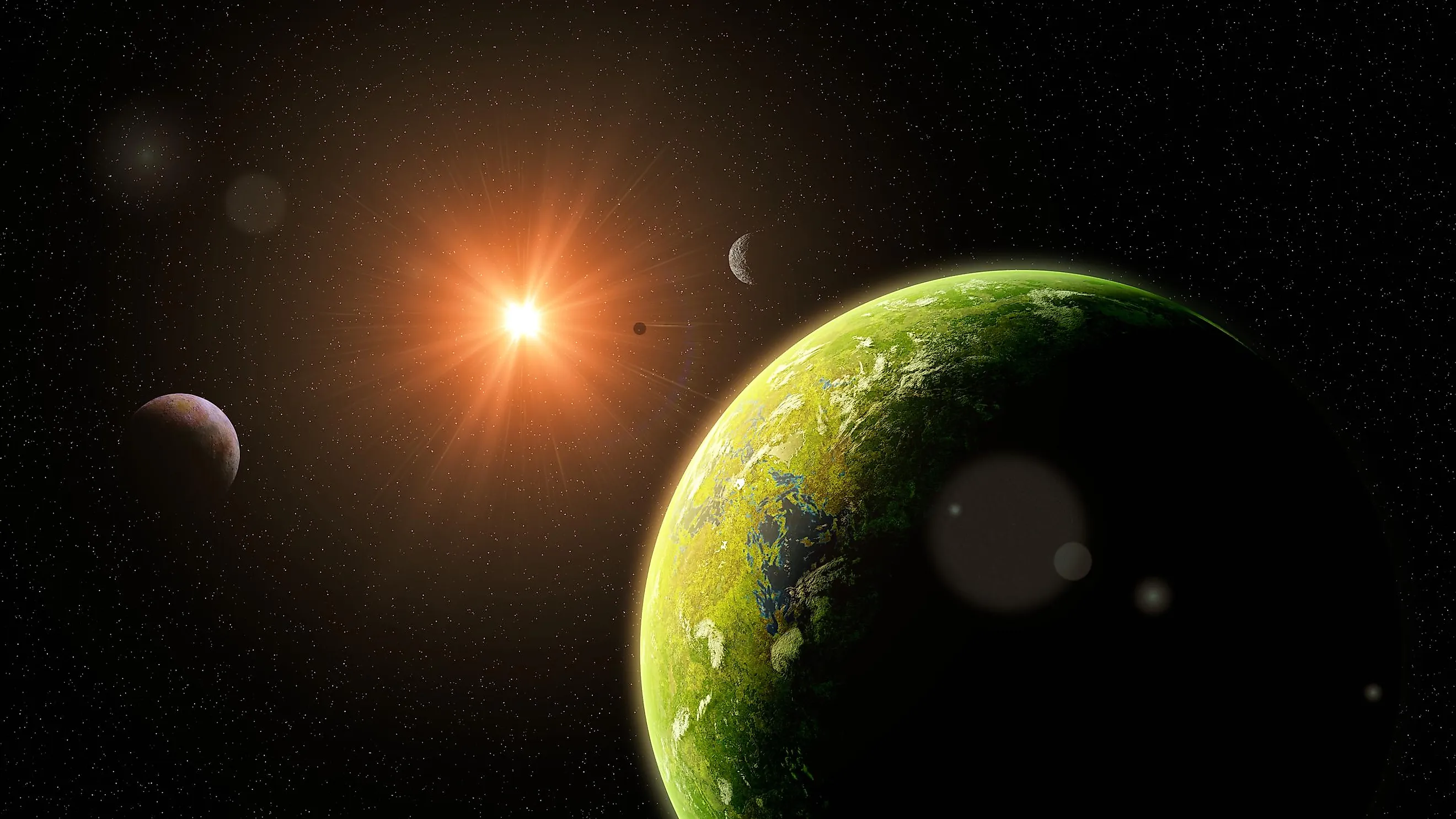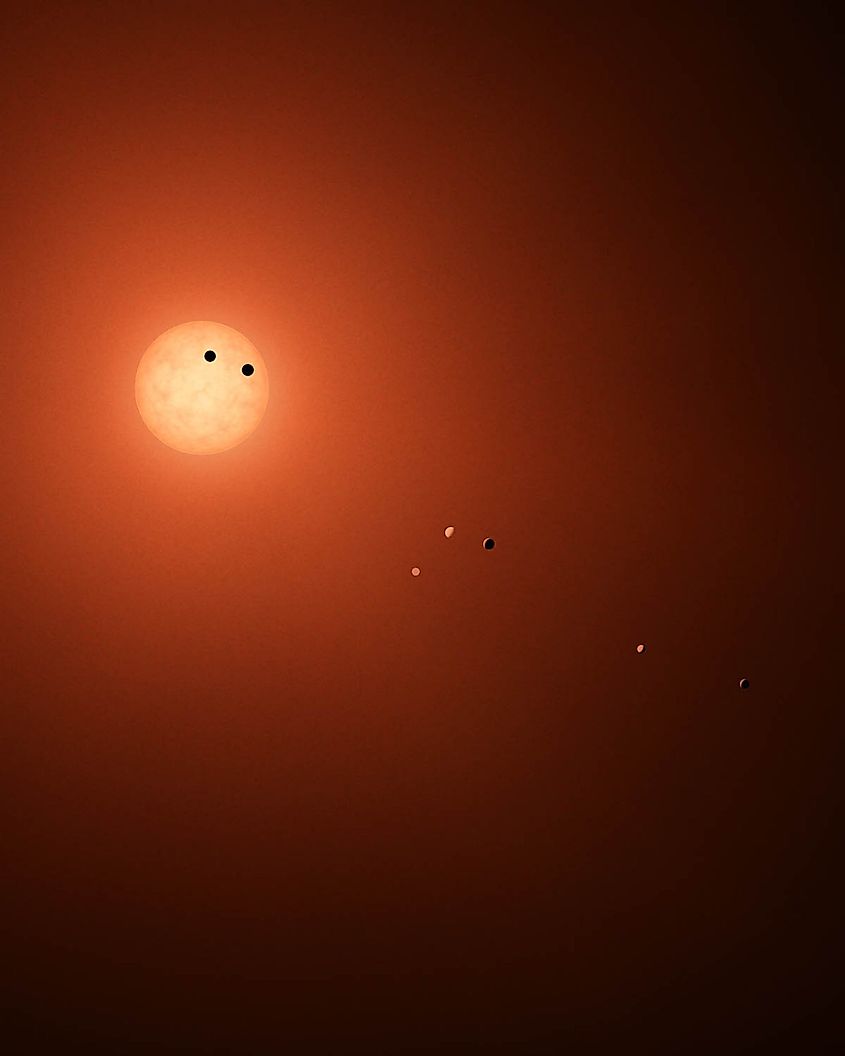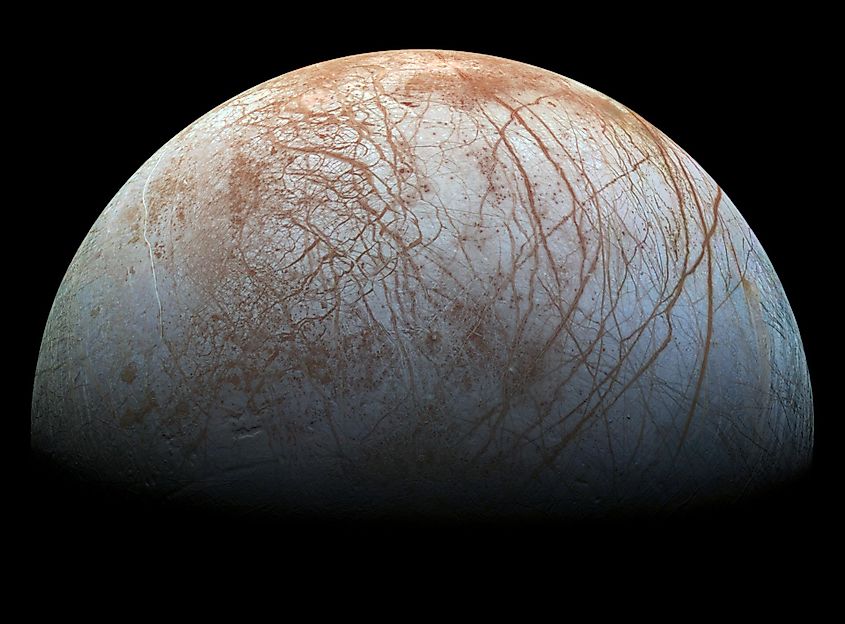
What Is The Habitable Zone?
What makes the Earth habitable? There are multiple factors, yet most relate to a single aspect of our world: it orbits the sun at just the proper distance. Every star is surrounded by a region called the habitable zone. This region is around a star where water can potentially exist in liquid form on a planet’s surface. Water is used to define the habitable zone because it’s the primary ingredient life uses on Earth. One of NASA’s mottos is “Follow the water.” However, it should be noted that not every world in the habitable zone is guaranteed to have liquid water flowing on its surface. In our solar system, the habitable zone stretches from just outside the orbit of Venus to Mars, yet neither of these worlds is currently home to oceans, lakes, or rivers. Instead, the habitable zone is simply a way of determining the potential habitability of a world. Not every planet in the habitable zone will be habitable. The habitable zone defines the potential for a world to become habitable.
Different Habitable Zones

The habitable zone varies from star to star. The more massive and hotter a star is, the further away from the star the habitable zone is. For the smallest stars, the habitable zone is much closer to the star. High-mass stars are scorching and emit tremendous amounts of deadly radiation, making it all the more difficult for a planet in the habitable zone to form an atmosphere. Furthermore, high-mass stars do not tend to stick around for very long. If our sun had been a high-mass star, it may have gone supernova before life could have even gotten started. Red dwarf stars have shown a lot of promise simply because more Earth-sized and super-Earth planets have been discovered around them than any other class of star. However, these too have their problems. Firstly, despite being smaller and colder than most stars, red dwarfs are extremely active, bursting out solar flares and solar storms at a far higher rate than most stars.
Solar storms would pose a considerable risk toward habitability because a planet must orbit very close to a red dwarf to be in the habitable zone. Secondly, the close proximity required to be in a red dwarf’s habitable zone also means that any planets in this region will be tidally locked, meaning that one side of the planet always faces the star. In contrast, the other side always faces away. Half of the planet would experience eternal day, while the other half would experience endless night. Unfortunately, this dramatically impacts surface temperature, generally resulting in the day side being far too hot and the night side being far too cold. Interestingly, the region separating night from the day could potentially serve as an oasis for developing life, a region that would experience an eternal sunset (or sunrise). Also, some models have predicted that, depending on the planet's atmosphere, heat from the day side could be circulated towards the night side, maintaining temperatures and allowing liquid water to form on the surface. For now, it looks like sun-like stars are the most promising for life. The sun is active, yet solar storms are not generally extreme enough to pose any threat to life on Earth. The sun’s temperature is neither too hot nor too cold, allowing us to orbit at such a distance that our planet does not become tidally locked. Also, the sun burns through its hydrogen steadily, allowing it to exist long enough for life to evolve and flourish long before it dies out.
Habitability Outside The Habitable Zone

A planet can orbit in the habitable zone and still never become habitable, yet is it possible for a planet outside the habitable zone to become habitable? In recent years, scientists have had to rethink the terms of habitability. In our solar system alone, a handful of moons that orbit the gas giants are known to possess habitable conditions such as liquid water. These moons exist far outside the habitable zone, yet conditions have allowed liquid water formation. For example, Jupiter’s moon Europa and Saturn’s moon Enceladus both have subsurface oceans of liquid water. A world can become habitable outside the habitable zone. This realization allows scientists to expand their search for habitable worlds around other stars.











